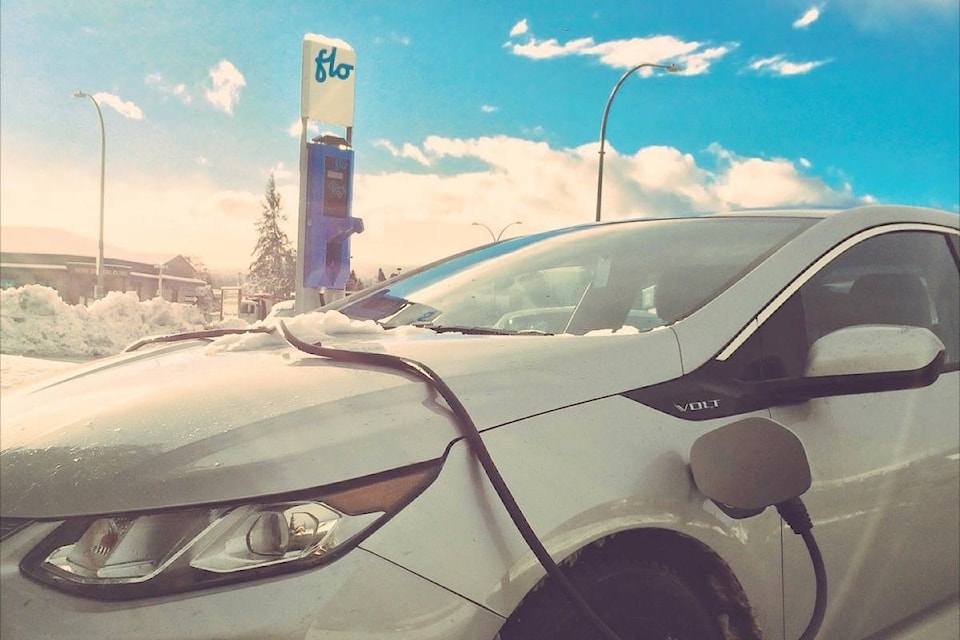The Northern Development Initiative Trust (NDIT) has announced that it will be providing $192,000 to help fund 47 Level 2 electric vehicle (EV) charging stations in central and northern B.C., including two in Ashcroft.
Logan Lake will also be funded for two Level 2 stations. The two communities are the southernmost of 26 local government and First Nations communities that will receive funding for the stations, which are being provided via the Charge North EV network, which is being managed by the Community Energy Association.
At its regular meeting on Feb. 25, 2019 Ashcroft council considered an invitation to join the Charge North initiative, and how many EV stations they would be prepared to partially fund. At the time, the Village’s share of the cost of each station (including equipment, installation, five years of warranty and networking fees, and project management) was $5,040 out of a total cost of $18,667.
Council voted in favour of participating in the grant application and committed to provide a location for the stations on Village property. Among the locations suggested were the Heritage Park or the museum, and it was also suggested that the public works yard might be suitable for one in due course, as within the next few years the Village will likely be transitioning to EVs.
Holly Plato, NDIT’s Director, Communications and Marketing, says that they received the application for the grant and determined that it was an excellent project.
“There are an increasing number of EVs on the road, and moving into the future there aren’t going to be less; there will be more. This project will be a benefit to all communities in the north. It takes a few hours to charge a vehicle with a Level 2 charger, so maybe people will go shopping, have a meal, or see local attractions.
“It will attract more people to these communities, and showcase them.”
Janice Keyes, Senior Manager, Community Energy Engagement for the Community Energy Association, agrees that the Level 2 stations are good for economic development.
“They’re key to getting people into a community, where they’ll spend time and money. They’ll have lunch, go for a walk, do some shopping. It takes four to six hours to charge, so you’ll get travellers and tourists willing to plug in for four hours, and communities can market their attractions.”
She notes that while fast charge stations—which will charge a battery to 80 per cent within half-an-hour—are important in terms of developing a network of stations so people feel confident they can get where they’re going, they are also very expensive.
“They’re about $100,000 each to put in. The average cost to purchase and install a Level 2 is about $15,000, which is much more affordable for local governments to do, leaving fast charge stations to BC Hydro and the Province.”
She adds that while the fast charge stations require 3-phase power, Level 2 stations only require a 240-volt socket, similar to one used for a home dryer.
“With funding from local governments and NDIT, we can purchase all 47 stations and install about a third of them,” says Keyes. “We’re now looking for funding to complete the installation. We have a grant application in, and hope to hear in early 2020.”
There is no timeline for installation of the stations at the moment, but Keyes says they will be liaising with local governments to look at location choices to make sure they’re suitable, and will start working on a Request for Proposal for the project.
“It covers a lot of area, and it’s community-driven, because the communities are contributing to the cost of the stations,” says Keyes. “Logan Lake and Ashcroft, along the Highway 97C corridor, have put in contributions for two stations each, and there are fast charge stations at the Loon Lake rest area on the Connector and in Cache Creek and Clinton. The area is starting to fill out a bit.”
editorial@accjournal.ca
Like us on Facebook and follow us on Twitter
